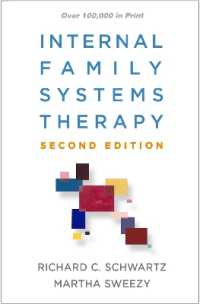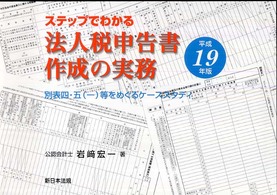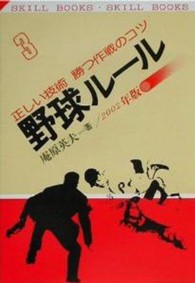- ホーム
- > 洋書
- > 英文書
- > Literary Criticism
Full Description
Petrarch's Rerum vulgarium fragmenta, a collection of lyric poems on sacred and profane love and other subjects, has traditionally been viewed as reflecting the conflicted nature of its author. However, award winning author Thomas E. Peterson argues that Petrarch's Fragmenta is an ordered and coherent work unified by narrative and theological structures.
By concentrating on the poem's reliance on Christian tenets and distinguishing between author, narrator and character, Peterson exposes the underlying narrative and theological unity of the work. Building on recent Petrarch scholarship and broader studies of medieval poetics, poetic narrativity, and biblical intertextuality, Peterson conducts a rigorous examination of the Fragmenta's poetic language. This combination of stylistic and philological analysis recasts Petrarch's poetry in a new light revealing its radically innovative and liberating character.
Contents
Introduction
Petrarch Today: A Focus on Narrativity
Humanism and Poetic Theology
A History of Return
Chapter 1: Historical Context and PoeticForm
The Poetry of the Tradition
Style, Genre,Structure
The Proem of the Fragmenta (Rvf 1-10)
Chapter 2: Temporality andDesire
Entering the Selva of the FirstCentenary
The Dimension of Fable in the 'Raccolta of 1342'
Further Consequences ofFable
Chapter 3: The Language of Tears (Rvf 92-122)
A Parable of Return
Nature, Landscape, Solitude
The Secretum and Canzone
Chapter 4: In fresca riva: Landscape and History(Rvf 125-183)
Canzoni 125-129
Saint Peter and the AvignonChurch
Antithesis and Parallelism
Chapter5: The Penitent Lover (Rvf 184-263)
The Fading Myth of Daphne
Out of the Labyrinth, Away From the World
APoetics of Quietude
Chapter 6: Songs of Grief and Lamentation (Rvf 264-317)
"Quelle pietosebraccia" (264, 14)
"Come va 'l mondo!" (290, 1)
Augustinian Time and the Process ofGrieving
Chapter 7: Songs of Consecration (Rvf 319-366)
The In Between Time of Parable
Friendship and Dialogue,Memory and Solitude
Seeds of Grace
Conclusion
Historical Reception and the Figure of Petrarch
"Altr'uom" (Narrative, Style, Theology)
An Autopoietic Unity
Notes
Bibliography








